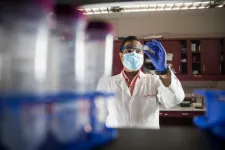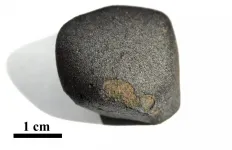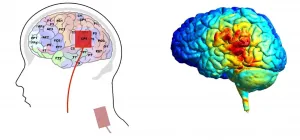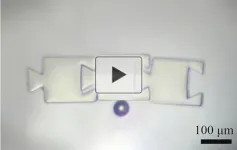University of Kentucky researchers link low blood amylin level to reduced progression of Alzheimer's
2021-01-21
(Press-News.org) LEXINGTON, Ky. (January 20, 2021) - More than 5.7 million Americans live with Alzheimer's disease and that number is projected to triple by 2050. Despite the growing number there is not a cure. Florin Despa a professor with the University of Kentucky's department of pharmacology and nutritional sciences says, "The mechanisms underlying neurodegenerative diseases are largely unknown and effective therapies are lacking." That is why numerous studies and trials are ongoing around the world including at the University of Kentucky. One of those studies by University of Kentucky researchers was recently published in Alzheimer's & Dementia: Translational Research & Clinical Interventions. It is the first publication from the Research Center for Healthy Metabolism.
Despa says that a major scientific goal is to understand whether the same factors that are involved in age-related metabolic disorders such as type-2 diabetes may also play a role in the development and progression of cognitive decline and dementia. He says that is a goal because those factors can be used as therapeutic targets to improve or possibly reverse processes underlying cognitive impairment. Researchers believe their newly published study found a potential alternative approach to reduce the progression of Alzheimer's disease.
Alzheimer's disease (AD) is characterized by brain accumulation of sticky proteins called β-amyloid that can be related to a genetic predisposition (familial AD) or occur sporadically (sporadic AD). Dr. Greg Jicha is one of several researchers from UK's Sanders-Brown Center on Aging who helped with the study, "The amylin is found both within amyloid plaques and in blood vessels. Amylin helps form plaques in the brains of some AD patients, worsening the disease. In blood vessels, it causes impairment in oxygen and nutrients reaching the brain leading to small vessel ischemic disease, more commonly known as 'hardening of the arteries'. Both these processes contribute to brain dysfunction and worsen cognitive and memory decline."
The team's work shows that early pathological processes in the brains of individuals who are genetically predisposed to develop Alzheimer's disease are modulated by a pancreatic hormone called amylin. This study is the first to show that the brains of patients with familial AD accumulate amyloid-forming amylin secreted by the pancreas. "Our study suggests an alternative approach to reduce the progression of Alzheimer's disease through the modulation of blood levels of amylin. In addition, the results of this study can point to the pancreatic hormone amylin as a potential missing molecular link between metabolic disorders and increased risk for Alzheimer's disease. Specifically, amylin dysregulation contributes to both type-2 diabetes and Alzheimer's disease."
The study is also the first to show mechanistically that low blood amylin protects against Alzheimer's disease. Their results suggest that the development of anti-amylin therapies may improve the lives of familial Alzheimer's disease mutation carriers and slow the progression of sporadic Alzheimer's disease.
Dr. Jicha says, "There are available medications that can be readily repurposed and approved to block these processes, keeping the brain healthy for a much longer period of time. This work is designed to help move such agents into the pipeline as we search for new ways to combat Alzheimer's disease."
Despa says it is important to note that while increased blood amylin cannot diagnose Alzheimer's disease, testing its presence in the blood could help physicians in the evaluation process of high-risk cerebrovascular disease and the progression of Alzheimer's disease.
INFORMATION:
The study involved the efforts of researchers from three Alzheimer's Disease Centers in the United States, including UK's Sanders-Brown Center on Aging. Additionally, three international Alzheimer's Disease Centers participated.
Along with the Sanders-Brown Center on Aging several other departments within the University of Kentucky are represented in this work with numerous faculty members playing large roles in the study; Florin Despa, Ph.D., professor of pharmacology and nutritional sciences, Dr. Larry Goldstein, professor and chairman of neurology, Dr. Greg Jicha, professor of neurology, Dr. Pete Nelson, professor of neuropathology, Donna Wilcock, Ph.D., professor of physiology, Erin Abner, Ph.D., associate professor of epidemiology, Sandra Despa, Ph.D., associate professor of pharmacology and nutritional sciences, Nirmal Verma, Ph.D., assistant professor of pharmacology and nurtritional sciences. Their work was funded through numerous grants and the University of Kentucky Research Alliance (ADAM).
Research reported in this publication was supported by the National Institute on Aging and the National Institute of Neurological Disorders and Stroke of the National Institutes of Health under Award Numbers AG057290, AG053999, AG028383, and NS116058. The content is solely the responsibility of the authors and does not necessarily represent the official views of the National Institutes of Health.
The University of Kentucky initiated its aging program in 1963. With a grant from the Eleanor and John Y. Brown Jr. Foundation in 1972, the construction of the current Sanders-Brown Research Building was begun and, with additional funding from the state, a program in biomedical research was implemented. In 1979, under the direction of the late Dr. William Markesbery, Sanders-Brown emerged as a national leader in efforts to improve the quality of life for the elderly through research and education. SBCoA's major areas of focus are normal brain aging, stroke, and Alzheimer's disease and related dementias.
In 1985, the University of Kentucky Sanders-Brown Center on Aging Alzheimer's Disease Center was funded as one of the first 10 Alzheimer's Disease Research Centers funded by the National Institute on Aging, part of the National Institutes of Health, grant number P30AG028383. Currently, only 31 designated Alzheimer's Disease Research Centers exist in the U.S. and only nine -- including Sanders-Brown -- have been continuously funded since the designation was launched.
[Attachments] See images for this press release:

ELSE PRESS RELEASES FROM THIS DATE:
2021-01-21
Older adults are managing the stress of the coronavirus pandemic better than younger adults, reporting less depression and anxiety despite also experiencing greater general concern about COVID-19, according to a study recently published by researchers at the UConn School of Nursing.
Their somewhat paradoxical findings, published last month in the journal Aging and Mental Health, suggest that although greater psychological distress has been reported during the pandemic, older age may offer a buffer against negative feelings brought on by the virus's impact.
"When you think about older adulthood, oftentimes, there are downsides. For example, with regard to physical well-being, we don't recover as well from injury or ...
2021-01-21
Not long after the sun goes down, pairs of burying beetles, or Nicrophorus orbicollis, begin looking for corpses.
For these beetles, this is not some macabre activity; it's house-hunting, and they are in search of the perfect corpse to start a family in. They can sense a good find from miles away, because carrion serves as a food source for countless members of nature's clean-up crew. But because these beetles want to live in these corpses, they don't want to share their discovery. As a result, burying beetles have clever ways of claiming their decaying prize all for themselves. In new research published in The American Naturalist, researchers from UConn and The University of Bayreuth have found these beetles recruit microbes to help throw rivals off the scent.
Immediately following ...
2021-01-21
The NFL playoffs are underway, and fans are finding ways to simulate tailgating during the COVID-19 pandemic. Football watch parties are synonymous with eating fatty foods and drinking alcohol. Have you ever wondered what all of that eating and drinking does to your body?
Researchers from the University of Missouri School of Medicine simulated a tailgating situation with a small group of overweight but healthy men and examined the impact of the eating and drinking on their livers using blood tests and a liver scan. They discovered remarkably differing responses in the subjects.
"Surprisingly, we found that in overweight men, after an afternoon of eating and drinking, how their bodies reacted to food and drink was not uniform," said Elizabeth Parks, PhD, professor of nutrition and ...
2021-01-21
University of Arizona researchers read between the lines of tree rings to reconstruct exactly what happened in Alaska the year that the Laki Volcano erupted half a world away in Iceland. What they learned can help fine-tune future climate predictions.
In June 1783, Laki spewed more sulfur into the atmosphere than any other Northern Hemisphere eruption in the last 1,000 years. The Inuit in North America tell stories about the year that summer never arrived. Benjamin Franklin, who was in France at the time, noted the "fog" that descended over much of Europe in the aftermath, and correctly reasoned that it led to an unusually cold winter on the continent.
Previous analyses of annual tree rings have shown that the entire 1783 growing season for the spruce ...
2021-01-21
A meteorite that fell in northern Germany in 2019 contains carbonates which are among the oldest in the solar system; it also evidences the earliest presence of liquid water on a minor planet. The high-resolution Ion Probe - a research instrument at the Institute of Earth Sciences at Heidelberg University - provided the measurements. The investigation by the Cosmochemistry Research Group led by Prof. Dr Mario Trieloff was part of a consortium study coordinated by the University of Münster with participating scientists from Europe, Australia and the USA.
Carbonates are ubiquitous rocks on Earth. They can be found in the mountain ranges of the Dolomites, the chalk cliffs on the island of Rügen, and in the coral reefs of the ...
2021-01-21
Transcranial direct current stimulation (tDCS) is a non-invasive method of brain stimulation, in which electrodes are applied over certain places on the scalp, creating a weak electric field. It is currently used for a variety of purposes: from treating depression and pain syndromes to better acquisition of new words and even sports techniques.
During stimulation, the active electrode can transmit a positive or negative electrical charge. In the former case, this stimulation is called 'anodal'; in the latter one, it is called 'cathodal'. Researchers believe that anodal tDCS generally leads to depolarisation of neurons, which increases the likelihood of their excitation when new information arrives. Cathodal ...
2021-01-21
As the United States struggles to control record-breaking increases in COVID-19 infections and hospitalizations, the roll-out of two approved vaccines offers tremendous hope for saving lives and curbing the pandemic. To achieve success, however, experts estimate that at least 70 to 90 percent of the population must be inoculated to achieve herd immunity, but how can we ensure folks will voluntarily receive a vaccine?
Both vaccines require two injections. Pfizer-BioNTech's second dose must be given 21 days after the first and Moderna's second dose must be administered 28 days after the first. While public health and infectious disease experts have discussed strategies to enhance adherence, including the potential use of financial incentives, ...
2021-01-21
One more piece of the puzzle has fallen into place behind a new drug whose anti-cancer potential was developed at the University of Alberta and is set to begin human trials this year, thanks to newly published research.
"The results provide more justification and rationale for starting the clinical trial in May," said first author John Mackey, professor and director of oncology clinical trials in the Faculty of Medicine & Dentistry. "It's another exciting stepping stone to finding out if this is going to be a new cancer treatment."
The drug PCLX-001 is designed to selectively kill cancer cells by targeting enzymes ...
2021-01-21
Better grades thanks to your fellow students? A study conducted by the University of Zurich's Faculty of Business, Economics and Informatics has revealed that not only the grade point average, gender and nationality peers can influence your own academic achievement, but so can their personalities. Intensive contact and interaction with persistent fellow students improve your own performance, and this effect even endures in subsequent semesters.
Personality traits influence many significant outcomes in life, such as one's educational attainment, income, career achievements or health. Assistant Professor Ulf Zölitz of the University of Zurich's Department of Economics and Jacobs Center for Productive Youth Development has investigated how one's own personality affects fellow students.
The ...
2021-01-21
Robots are widely used to build cars, paint airplanes and sew clothing in factories, but the assembly of microscopic components, such as those for biomedical applications, has not yet been automated. Lasers could be the solution. Now, researchers reporting in ACS Applied Materials & Interfaces have used lasers to create miniature robots from bubbles that lift, drop and manipulate small pieces into interconnected structures. Watch a video of the bubble microrobots in action here.
As manufacturing has miniaturized, objects are now being constructed that are only a few hundred micrometers long, or about the thickness of a sheet of paper. But it is hard to position ...
LAST 30 PRESS RELEASES:
[Press-News.org] University of Kentucky researchers link low blood amylin level to reduced progression of Alzheimer's






